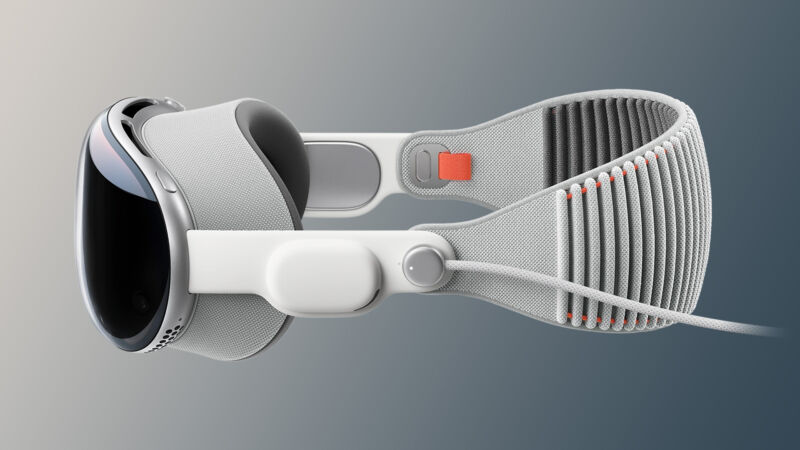
Apple is taking several steps to help developers prepare their apps for Apple's new Vision Pro platform next year, above and beyond the Vision Pro simulator that comes with the Xcode development environment. One of those steps is actual pre-release hardware in the form of the Apple Vision Pro developer kit (DK).
This is pre-release Vision Pro hardware that Apple will loan to selected developers for the express purpose of developing and testing apps. Apple has offered these kinds of kits to some developers before, most notably during the Apple Silicon transition when it loaned out Developer Transition Kits that put the guts of an iPad Pro into a Mac mini-sized enclosure.
But some developers have drawn attention to the terms and conditions (PDF) for the Vision Pro DK, which are notably restrictive and specific. The most specific terms are in section four, under "care and storage of the DK," which say that the DK is only to be used in a lockable windowless room, that your friends and family aren't allowed to see it, that it must remain within your direct line of sight at all times, that it must be in its case and locked up when not in use, and that you need to consult with Apple if you'll be on a long trip or vacation and are leaving the DK behind. The full paragraph:
You agree that all access to, usage of, and storage use of the DK will be in a private, secure workspace accessible only by You and Your Authorized Developers (e.g., fully enclosed with solid doors, floors, walls and ceiling, and locks that can be engaged when the DK is in use). You must ensure that unauthorized persons (including any family, friends, roommates or household employees) do not access, view, handle, or use the DK. When in use, the DK should be in your positive control (on your person or within Your direct line of sight) at all times. You must ensure the DK is passcode protected. Never leave the DK unattended. When not in use, turn off the DK and store it in its locked Pelican case in a locked space that only You have access to (e.g., a locked room or closet, a safe or locked drawer). The DK may not be moved from or taken away from its ship-to address by You or Your Authorized Developers without Apple's prior written consent. If You will be away from Your workspace for more than 10 days, consult with Your Apple point of contact about how to keep the DK safe while You are away. You agree to restrict access to the DK to You and Your Authorized Developers, and to take all reasonable precautions to safeguard the DK from loss or theft.
Developers will also have to agree to return the DK at Apple's request or within 90 days of the retail launch of the Vision Pro. New software updates must be installed on the DK within two weeks of their release, and if you're at a company where multiple people need to use the Vision Pro, you need to provide Apple with a list of no more than 10 people who will be allowed to use it.
Not totally abnormal
These kinds of terms are actually not so out of the ordinary for loaner hardware from a company, especially pre-release loaner hardware. But the detail and specificity of Apple's terms goes a couple of steps beyond what Apple has done in the past.
Apple's terms and conditions (PDF) for the Apple Silicon Developer Transition Kit specify that it is only to be used for development, that you're not supposed to modify it or take it apart, and that it should not be publicly written about or shown to anyone aside from you and developers you work with. When it loans out Xbox development kits, Microsoft says the hardware should only be used "in a Microsoft-approved location."
But neither document goes so far as to spell out in detail everyone who is not allowed to view the hardware, says nothing about how the hardware is to be stored or secured when not in use, and to dictate that you never let the headset out of your sight when it is being used.
Apple is going to great lengths to control how the Vision Pro headset is used, depicted, and received by the public. Apple execs weren't even pictured wearing the headset when it was announced at WWDC last month, something that one reporter referred to as "meme control," and most journalists who went hands-on with the device also weren't allowed to show themselves wearing it. The restrictive Vision Pro dev kit terms seem like part of the same effort—Apple really doesn't want members of the general public to use unfinished, rough-around-the-edges pre-release software and/or hardware and get the wrong idea about the headset's capabilities.
Eventually, the headset will be released, and people will find all the bugs and the awkward edge cases whether Apple wants them to or not (and there will be edge cases and limitations and bugs, especially in 1.0 software running on 1.0 hardware). Until then, Apple wants to keep as tight a lid on Vision Pro as it can.
Promoted Comments
Reader Comments (71)
View comments on forumLoading comments...